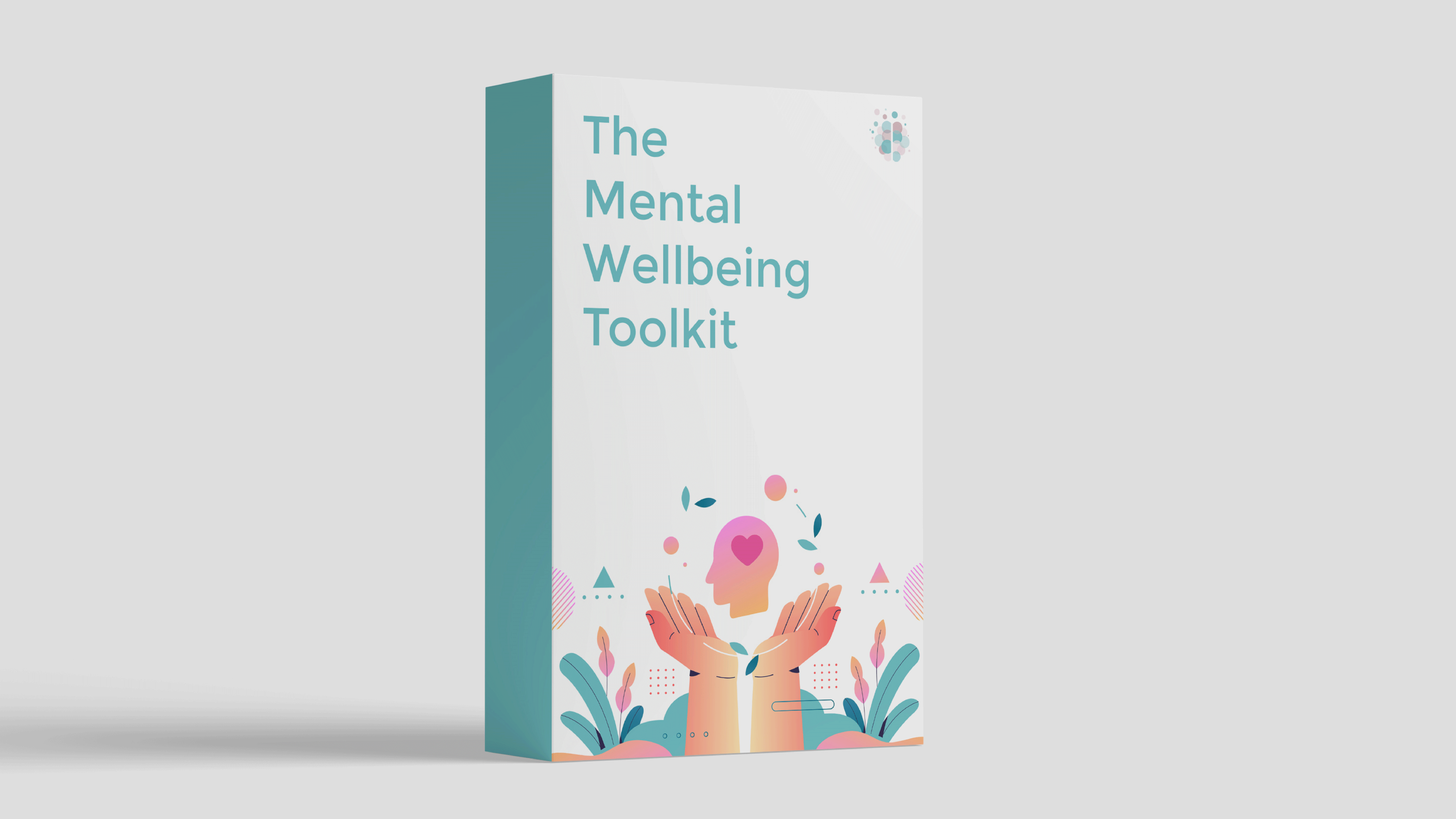
A mental wellbeing technique that we’ve found resonates well with our audience is that of positive affirmations. Positive affirmations are short, uplifting statements that can help reframe unhelpful thoughts and instil a sense of positivity and calm.
Keep reading to discover 11 positive affirmations for anxiety – and be sure to grab our free mobile wallpapers featuring them!
1. "My Emotions Do Not Reflect Reality"
If you’re prone to anxiety, your emotional reaction to unwanted situations can make things appear a lot worse than they actually are.
It’s easy to get caught up in the intensity of the emotion without realising that the thoughts it leads to are unreasonable.
We catastrophize, jumping to worse case scenarios, before recognising our brain’s overreaction. Things often aren’t as bad as our feelings would have us believe.
So, this affirmation is here to remind you that your emotions (especially intense ones that often accompany anxiety), do not always accurately represent the objective reality of a situation.
My emotions do not reflect reality.
Repeat this to yourself whenever you feel that intense pang of anxiety. Remind yourself to take a step back and consider whether your feelings align with the actual circumstances or if they’re influenced by your anxiety.
2. "Protect Your Peace"
This statement highlights the importance of safeguarding your emotional wellbeing.
It encourages you to make choices and set boundaries that prioritize your mental stability.
Know that certain situations bring out your worst, anxious self?
Protect your peace! Don’t go there.
Situations this might apply to:
- Engaging in relationships that consistently bring emotional turmoil into your life
- Overusing social media
- Doomscrolling
- Taking on too many commitments
- Engaging in harmful habits such as excessive drinking or substance abuse
- Constantly comparing yourself to others
This affirmation emphasizes the importance of self-care when confronting anxiety triggers, guiding you to make choices that prioritize your mental wellbeing.
3. "Be Kind to Your Mind"
This affirmation highlights the importance of treating your thoughts with compassion and gentleness.
It encourages self-compassion, reminding you to avoid self-criticism or harsh judgment in times of anxiety.
Here’s an excerpt from our free workbook, Understanding Your Mental Wellbeing, that relates to this:
"A little girl gets hit by a car on a street with a 30mph speed limit. The driver was looking down at their phone and didn't see the little girl crossing the road. Sadly, she broke two ribs and her leg. It’s now six months later, and she's just had her leg cast removed.Do you scold the little girl for not knowing the exercises to regain her muscle strength?
Do you belittle her for being in pain, telling her she shouldn't feel that way?
Do you tell her she’s being a burden by asking others for help?
Of course, the answer is no. Yet, we so often treat ourselves this way, don’t we? We beat ourselves up for not being able to manage our emotions and bodily responses. We don't remind ourselves that mental wellbeing skills aren't taught in schools and it's not our fault that we struggle to cope.
Just like the physical injury wasn't the girl's fault, your mental injury is not your fault. However, just like the girl can do leg exercises to build up her physical strength, you can do mental and behavioural exercises to build up your mental strength.
You can rewire your brain and body. You can help yourself feel better. Your poor mental wellbeing state is not your fault, but it is your responsibility to help yourself heal.”
Be kind to your mind.
4. "I Am Present"
Heard of that quote from Seneca, “We suffer more in imagination than in reality”?
It’s true. The majority of our mental suffering comes from projecting ourselves into the future and dwelling on the past.
This affirmation reminds you to be here now. Live in the moment, and feel better.
You might try The Worry Time Technique to help refocus your mind away from worries, scheduling journaling times to reflect on life’s stressors. Not Worry Time? Return your mind to the present.
5. "Thoughts Aren't Facts"
Here’s a quote from mindfulness master Jon Kabat-Zinn:
"Most people don’t realise that our mind constantly chatters. And yet, that chatter ends up being the force that drives us much of the day in terms of what we do, what we react to, and how we feel."
In Acceptance and Commitment Therapy (ACT, pronounced ‘act’ for short), when you’re not aware of the space between your thoughts and your response to them, you’re experiencing cognitive fusion.
In the cognitive fusion state, you forget that thoughts are just thoughts, you treat them as truth, and you fall deeper and deeper into downward spirals of challenging emotions.
Thoughts aren’t facts.
This statement reminds you that thoughts, especially anxious ones, are not necessarily accurate representations of reality.
Feeling anxious? Question and challenge your thoughts. Step back. Observe. Recognize that thoughts are just mental constructs and not definitive truths.
6. "I Am in Charge of My Mind and I Choose Positivity"
Negative thinking habits come easier to us than positive ones because we have an ingrained and powerful negativity bias.
As avoiding danger was extremely important for our ancient ancestors, negative emotions have a stronger impact on us than positive emotions, we process negative information more easily and quickly, and we react more intensely to negative stimuli than to equally strong positive stimuli.
The struggle is real – it takes effort to feel positive!
This affirmation reminds you to make that effort. Take control of your thoughts and emotions. You have the ability to redirect your thoughts toward positivity and optimism, even in the face of anxiety.
As Viktor Frankl noted: “Between stimulus and response there is a space. In that space is our power to choose our response. In our response lies our growth and our freedom.”
7. "Inhale, Exhale"
Did you know that the majority of physical anxiety symptoms come from hyperventilation? Anxiety causes rapid and shallow breathing, which can lead to a decrease in the carbon dioxide (CO2) levels in the blood.
This drop in CO2 levels can result in symptoms such as light-headedness, dizziness, and tingling sensations. It can also lead to a feeling of breathlessness or the sensation of not getting enough air.
But don’t worry – practicing regular breathing exercises is an easy thing you can do to help yourself feel better.
Feeling tense with anxiety? Got a tight chest?
Inhale, exhale.
Focus on your breath. Take slow, gentle breaths in and out of your nose. Calm down your body, calm down your mind.
8. "This Too Shall Pass"
Ever experienced a panic attack?
They’re absolutely horrible.
They’re caused by a surge of adrenaline into your system. They might come in waves, and typically they last between five minutes and half an hour. They can feel completely out of the blue. Although they're very frightening, they're not dangerous.
We urge you to familiarise yourself with the signs of panic attacks so that if you do ever experience one, you understand what’s happening and know how to deal with it.
9. "Change Is the Only Constant in Life"
People who experience anxiety have been shown to have a low tolerance for uncertainty.
This positive affirmation reminds us that change and uncertainty are inescapable parts of life, and the sooner we become comfortable with that, the better.
As John Allen Paulos notes: “Uncertainty is the only certainty there is, and knowing how to live with insecurity is the only security.”
Change is the only constant in life.
Let’s embrace life's fluctuations with adaptability and resilience, even when anxiety arises.
10. "Life Is Tough But So Are You"
To deal with uncertainty, we often resort to what psychologists call safety behaviours.
Safety behaviours are the things we do to feel safer, but they can end up making us feel worse in the long run. They prevent us from realising we’re stronger, more capable, and more resilient than we think.
Letitia was a 25-year-old woman with C-PTSD. She’d developed various safety behaviours to cope with anxiety, such as meticulous planning, avoiding social situations, and seeking reassurance from others.
Letitia’s safety behaviours were keeping her stuck. While they provided short-term relief, they perpetuated the cycle of anxiety. This resulted in isolation, hindered personal and professional growth, and strained her relationships.
In therapy, she began with small exposure exercises, such as attending low-pressure social gatherings and refraining from excessive planning. As she faced her fears, she discovered that many of her anxieties were based on unfounded fears.
The turning point came when she attended a social event she definitely would have previously avoided. To her surprise, she not only managed the event – she had a brilliant time.
With consistent therapy, she realized that she was stronger, more capable, and more resilient than she thought.
Life is tough, but so are you.
11. "I Am Grounded"
Grounding techniques work by interrupting distressing thought patterns and creating a sudden change of focus. By hijacking an escalating stress response, you help calm down your body and mind.
You can use them if you’re feeling anxious, dissociated, or overwhelmed.
They often involve using your five senses – sight, touch, hearing, smell and taste.
A common grounding exercise involving all the senses is the 5-4-3-2-1 Technique:
- Identify five things you can see
- Identify four things you can touch
- Identify three things you can hear
- Identify two things you can smell
- Identify one thing you can taste
Your sense of smell is powerful and can be hugely effective when used as a grounding technique. It’s easy to keep a small bottle of an essential oil in your bag to be used when you’re feeling distressed.
There are several oils which have been proven to have a calming effect. The olfactory system goes directly to the brain, so the effects are rapid. Oils such as lavender or chamomile can be particularly calming.
More Positive Affirmations for Anxiety
- I am strong, capable and resilient
- I accept the things I cannot change
- My thoughts are like passing clouds; I can let them come and go
- I have the power to distance myself from unhelpful thoughts
- I am safe
- I embrace uncertainty
- Whatever happens, I’ll handle it
- It’s okay to slow down
- I let go of the need for perfection
- I am worthy of peace and happiness
- I accept and allow this feeling
- I cannot read people's minds
- I cannot predict the future
- I've handled this feeling before and I'll handle it again
- I choose to be proactive, not reactive
- My thoughts may be negatively biased and that's okay
- I am in control of my reactions to my thoughts
- I release the need to control everything
Incorporating Positive Affirmations for Anxiety into Your Daily Routine
The key to harnessing the power of positive affirmations is consistency. Here are some tips to help you integrate them into your daily life:
- Mobile wallpapers. Use the form below to download our free mobile wallpapers containing the affirmations in this article in a range of styles and calming colours. It’s a convenient way to review them regularly and we hope that you find them helpful!
- Sticky notes. Place written affirmations on your bathroom mirror, computer, or refrigerator as gentle reminders throughout the day.
- Use an app. Many apps are designed to send you affirmations throughout the day, allowing you to incorporate them seamlessly into your routine.
- Journaling. Write down your affirmations and journal about your feelings and experiences.
Summary
By hijacking unhelpful thinking patterns with uplifting statements, you can transform your mind to be more resilient and optimistic.
Remember, we can’t choose our automatic thoughts, but we can choose our response to them.
We believe it’s all about understanding the difference between System 1 and System 2 thinking. You can learn more about this in our tool The Thinking Slow Method inside The Mental Wellbeing Toolkit.




